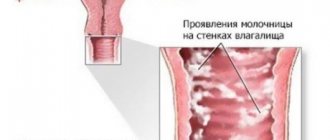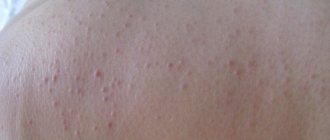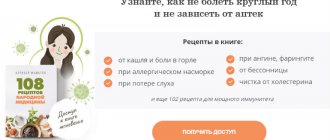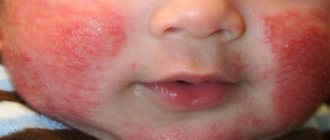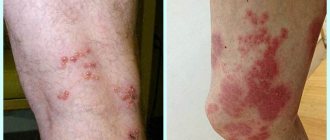What is prurigo
Prurigo is a dermatological disease based on an allergic skin lesion, accompanied by severe itching and the formation of microcracks and blisters. This disease occurs in people of any gender and age, which makes it an extremely important and relevant topic for research.
Itchy skin often indicates existing problems.
Due to the constant growth of industrial emissions and the formation of large amounts of harmful substances in drinking water, air and soil, this problem is acquiring truly global proportions.
Existing varieties of the disease
Currently, the disease is classified depending on the age of the patients:
- Prurigo of the elderly, otherwise known as senile pruritus. In this case, the manifestations of the disease are felt over the entire surface of the body, but are mild in nature, which significantly distinguishes it from other varieties. Such itching does not disturb a person’s sleep and normal life activities.
- Adult prurigo:
- prurigo - pinpoint rashes on the surface of the arms and legs, accompanied by severe unpleasant sensations;
- Beignet's prurigo is characterized by dense swelling of the skin and fatty tissue.
- Prurigo of childhood:
- strophulus is small red blisters that are sharply painful when pressed;
- Papular urticaria is manifested by the formation of itchy red spots of varying diameters on the skin.
- Hyde nodular prurigo affects all groups of the population and is characterized by the presence of round or oval rashes up to 0.5 centimeters in size.
Photo gallery: what different forms of the disease look like
Strophulus appears in children under 5 years of age
Hyde prurigo is accompanied by the formation of nodules on the skin
Prurigo is characterized by severe itching and burning.
Causes of prurigo in different population groups
The development of this disease is based on the body’s increased sensitivity to environmental factors. An exacerbation of the disease is provoked by contact with an allergen - a substance that irritates the human immune system. Moreover, the intensity of the reaction largely depends on his age and characteristics of the body. What can trigger the development of the disease:
- detergents;
- heavy metals;
- toxic gases;
- food products;
- emissions from industrial enterprises;
- sawdust;
- pet hair;
- alcohol;
- nicotine;
- chewing and smoking tobacco;
- down and feathers;
- dandruff;
- plant pollen;
- herbs;
- mold;
- medications;
- decorative and care cosmetics;
- perfume;
- neuropsychological tension, stress and conflicts.
Prurigo in children occurs due to the introduction of new foods and is directly related to hereditary predisposition. If at least one of the baby’s parents belongs to the category of allergy sufferers, then the risk of developing the disease increases several dozen times. The most common allergens are berries, citrus fruits, and sweets. In rare cases, pruritus occurs when eating predominantly protein foods.
During pregnancy, all women experience changes in hormonal levels. This leads to the fact that the body reacts much brighter and more acutely to all influences coming from the environment. In most patients, the disease occurs in response to the same factors as in non-pregnant women (food, household, industrial allergens), but due to a weakened immune system, all manifestations of the disease are much more pronounced.
Photo gallery: the most common allergens
Citrus fruits provoke the development of prurigo in young children
Cat hair causes allergies in 43% of the population
Household dust is a source of harmful microorganisms
Nutrition rules
For pruritus, one of the most important treatment methods is the right diet - if you do not follow the diet, the disease will only progress. Very important:
- Reduce the amount of carbohydrates in your diet
- Limit or even completely eliminate all salty, spicy and spicy foods
- Eat more vegetables and fruits
- Consume low-fat dairy products
- Drink more fluids
- Quit alcohol completely
- Limit the amount of cocoa, strong tea (especially black) and coffee you drink
Doctors believe that an important point in the treatment of the disease in question is nutrition - it should be balanced and fortified. In addition, you should limit your salt intake.
The diet for pruritus should include the following foods:
- dietary meat;
- porridge (except semolina);
- dairy products;
- potato;
- refined vegetable oils;
- vegetables;
- green varieties of pears and apples, gooseberries, light cherries;
- grain breads;
- mild varieties of cheese.
In the diet of children suffering from exudative-catarrhal diathesis, the amount of protein in foods is calculated in accordance with the age-related physiological norm. In the first 3 months of life - 2-2.5 g per 1 kg of body weight per day, from 3 to 6 months - 3 g, and from 6 months to 1 year and older - 3.5-4 g.
Fats and carbohydrates must be given in quantities slightly less than the physiological norm, after a year fats are less than 6-7 g per 1 kg of body weight, and carbohydrates are less than 12-14 g. All foods that cause exacerbation of itchy allergic dermatosis are excluded.
The diet of an adult patient should consist of vegetables and fruits, fish and dairy products. In principle, there are no strict restrictions on food, but you also need to adhere to the following rules:
- It is better to replace animal fats with sunflower oil;
- give preference to low-fat foods, steamed or baked foods;
- give up foods rich in carbohydrates - baked goods, pasta, potatoes;
- limit the amount of salt you consume, and preferably avoid it altogether.
Prurigo is a rather unpleasant disease that not only changes a person’s appearance, but also has a direct impact on the psycho-emotional background and rhythm of life. Only competent treatment and compliance with all the recommendations of the attending physician will completely get rid of this pathology.
Dietary restrictions are also necessary for women during pregnancy and breastfeeding. For example, you should not eat a lot of eggs, fish, citrus fruits, pork, strong meat broths, or pickles. Fruits and vegetables, fermented milk products and boiled beef are recommended.
Sick children, as well as pregnant and lactating women, must be carefully examined for the presence of helminths in the body, and if they are detected, deworming must be carried out, since helminths, especially roundworms, are highly allergenic to the body.
Of great importance is the treatment of chronic foci of infection, such as otitis media, carious teeth, chronic tonsillitis, sinusitis, etc. These measures reduce the possibility of developing infectious allergies and auto-allergies.
Source: medsimptom.com
Main symptoms of pruritus
Like any skin disease, this disease is accompanied by quite pronounced external manifestations. You can identify pruritus yourself by the following symptoms:
- Presence of a rash. It can have a different character: from small pinkish tubercles that barely rise above the surface of the skin, to huge red spots and blisters filled with cloudy liquid. Remember that piercing or squeezing them is strictly prohibited: there is a risk of infection. Elements of the rash can be located in natural folds (cervical, behind-the-ear, inguinal), as well as on the flexor and extension surfaces of the limbs, on the back and on the face. Localization in the scalp area is quite rare.
- Edema formation. The soft tissue in the affected area increases in size. This is due to the process of active traumatization of the smallest vessels and the release of blood from their lumen. The presence of edema can be determined by a simple experiment: when pressing on the skin, the dimple remains for fifty seconds.
- Severe itching that disrupts the usual rhythm of life. Patients sleep poorly and often injure their skin due to numerous scratches.
How pruritus manifests itself in children
In children, the disease develops with a predominance of general symptoms. The temperature rises to 37–37.5 degrees, children become restless, capricious and refuse to eat. In parallel with this, red itchy spots form on the skin, which are characterized by severe pain on palpation. The disease quite often appears in the area of the buttocks and thighs, as a result of which it can be confused with diaper rash and defects in care.
Prurigo rash can be located over the entire surface of the body
Features of pruritus in pregnant women
During pregnancy, the disease usually begins acutely. First, slight itchy redness appears on the skin, which is mistaken for insect bites. After a few hours, swelling gradually increases, and symptoms of general intoxication appear: nausea, vomiting, weakness and headaches. The patient’s psychological state suffers quite greatly: she refuses to eat, sleeps little, becomes nervous and irritable, which has a bad effect on the growing baby.
How to confirm the diagnosis of the disease
In most cases, pruritus must be differentiated from other skin diseases. Most often it is confused with urticaria, furunculosis, allergic rash, scabies or dermatomycosis. An experienced dermatologist is able to make a diagnosis based on an external examination, but to confirm it it is necessary to carry out some tests:
- Skin scraping examination. Using a scalpel, the doctor transfers several peeling elements into a special test tube or onto glass. After this, their composition and the presence of microbial agents are determined in the laboratory by microscopy. In this way, it is possible to differentiate pruritus from scabies or dermatomycosis, since in this disease any foreign microorganisms are absent.
- Carrying out tests with chemicals.
A few drops of the suspected allergens are applied to clean areas of the skin, after which the doctor waits for five to ten minutes to see which of them causes a reaction. Based on this diagnostic method, it is possible to determine what substance caused the development of prurigo. This diagnostic procedure is absolutely painless and does not cause discomfort to the patient.
Video: doctor talks about differential diagnosis of disease
Diagnostics
To confirm assumptions about the presence of nodular prurigo, the doctor performs a visual examination of pathogenic lesions on the skin. Pathological tissues are scraped and examined under a microscope.
The patient is referred for examination to a gastroenterologist. The solution makes it possible to identify malfunctions in the gastrointestinal tract that can provoke the development of nodular prurigo in adults and children. An analysis for dysbacteriosis is performed. Additionally, the diagnostician examines stool samples for the presence of helminth eggs.
During the examination, the doctor seeks to exclude the presence of diseases, the development of which has a similar pattern. Usually, the specific location and appearance of papules allows you to visually distinguish prurigo from toxicoderma, atopic dermatitis, and scabies.
Various ways to treat pruritus
Therapy for such a disease is a long and multi-stage process. Often, it takes more than six months for complete restoration and regeneration of the skin. Doctors recommend starting treatment with a special diet with a minimum amount of food allergens. This will quickly get rid of itching and identify the cause of its occurrence. It is also necessary to constantly moisturize the skin and use healing creams. At a later stage, systemic and general medications can be administered to alleviate the patient's condition. During the recovery period, physical therapy is prescribed: these procedures not only help reduce symptoms, but also help prevent the development of complications. At all stages, it is permissible to use folk remedies, as they can reduce the severity of itching and irritation, and also strengthen the immune system.
Drug therapy for prurigo
Only pharmaceutical drugs can get rid of the main symptoms of the disease and influence its cause. Most often, doctors use a combination of local and general therapy. In this case, medications of the first group are applied to clean skin using cotton swabs, tampons or discs. Means for general action affect the entire body as a whole, which allows you to completely defeat the disease and get rid of its manifestations.
Do not forget that all medications have indications and contraindications for use. Prescribing them independently can have a bad effect on your health.
Preparations for local use:
- Healing ointments improve skin regeneration processes. Their daily use allows you to quickly get rid of small wounds and scratches, which serve as entry points for infection. Most often, Bepanten, Panthenol-Teva, Pantoderm, Moreal-plus, Dexpanthenol, Rescuer are used for this purpose.
- Antiallergic gels and creams help get rid of redness and itching. The most popular medications from this series: Skin-cap, Epidel, Protopic, Fenistil, Dimetinden.
- Moisturizers soften the skin, eliminate flaking and dryness, and prevent the formation of new cracks. It is acceptable to use for this purpose products from the brands Clean Line, Garnier, Clarnis, baby cream, Johnson baby lotion and many others.
- Hormonal anti-inflammatory drugs reduce the severity of soft tissue swelling and prevent infection. The most commonly used are Akriderm, Prednisolone, Triderm, Advantan, Lorinden, Solcoseryl.
Photo gallery: medications for local treatment of the disease
Bepanten stimulates soft tissue regeneration
Fenistil helps get rid of itching
Akriderm is a local hormonal drug that reduces swelling
Means for systemic treatment of the disease:
- Antihistamines help relieve itching, burning and pain. A side effect is the occurrence of lethargy and drowsiness when using some of them. Most often used: Claritin, Diphenhydramine, Loratadine, Tavegil, Diazolin, Suprastin, Fexadine.
- Sedatives have a calming effect and help protect the body from overreacting to stress. The most common drugs in this group: Potassium bromide, Novo-Passit, Persen, Tenoten, Corvalol, Valocordin, mint, lemon balm, passionflower, hops.
- Immunostimulants allow the body to more effectively fight material and viral microflora, which reduces the risk of complications. For this purpose, Cycloferon, Viferon, Timalin, human immunoglobulin, Interferon, Taktivin, Thymogen are used.
Photo gallery: drugs for systemic therapy
Tavegil helps fight itching
Novo-passit protects the nervous system from stress
Cycloferon strengthens human immunity
Folk remedies as an additional method of treatment
Various herbs and plants also have healing effects, making them invaluable in combating the symptoms of prurigo. The use of various lotions, compresses and rubdowns helps not only improve the condition of the skin, but also prevent further progression of the disease. But do not forget that even frequent use of natural remedies will not help to completely eliminate the cause of the problem. That is why it is recommended to use pharmaceutical drugs in combination with traditional recipes to combat the disease.
Many plants, herbs and fruits themselves are powerful allergens. I had to deal with the consequences of using the wrong folk remedy at home. A sixty-year-old patient prepared an ointment based on rosemary oil and tangerine seeds. She applied it in a thick layer to the areas where the pruritus was located, as a result of which the symptoms of the disease not only did not go away, but also intensified. Gradually the swelling spread from one forearm to the shoulder, neck and even the upper part of the face. The patient was hospitalized with a serious exacerbation caused by the use of a combination of these oils. To avoid this, it is necessary to test each new product on the skin of the wrist. If there is no reaction within two minutes of application, you can continue to use this product.
The most popular folk recipes that help in the fight against illness:
- Place one hundred grams of yarrow in a saucepan with a liter of water. Cook for half an hour, then remove the raw materials using a sieve. Soak several large gauze dressings in the resulting liquid and place them on the areas where the largest number of rashes are located. This compress must be kept for fifteen minutes. Yarrow helps relieve swelling and redness of soft tissues. It is recommended to undergo a course of treatment consisting of twelve procedures with an interval of three days between them.
- Soak several large burdock leaves in boiling water for 5–10 minutes. Next, apply them to the places where the scratchy elements are located for half an hour. If necessary, you can wrap the sheets with a sterile bandage. Burdock helps reduce itching and also helps fight inflammation of the skin. To achieve the desired effect, the procedure must be repeated two to three times a day for a month.
- Brew one teaspoon of crushed wormwood in a glass of boiling water. After cooling, soak a cotton pad in the solution, and then use light blotting movements to treat the damaged skin areas. Wormwood reduces the severity of peeling and helps quickly get rid of small cracks and wounds. It is recommended to use this procedure at least once a day for three weeks.
Photo gallery: natural remedies used to treat pruritus
Yarrow reduces itching
Burdock can be used as a natural anti-inflammatory compress
Wormwood has a healing effect
Video: recipe for body milk that helps fight itching
Features of nutrition of patients with prurigo
Following a special diet plays an important role in the recovery of victims. This allows you to completely remove the food allergen and get rid of its effects on the body. Doctors strongly recommend avoiding fried and smoked foods, giving preference to boiled, stewed and baked foods. At the same time, to maintain optimal water-salt balance, you need to drink two liters of liquid per day.
What foods should patients with pruritus avoid:
- honey;
- chocolate;
- marmalade;
- paste;
- all citrus fruits;
- Strawberry wild-strawberry;
- chips;
- crackers;
- fast food;
- instant food products (soups, cereals, purees, noodles);
- glazed cheese curds;
- chewing gum;
- lollipops;
- dried fruits.
What to add to your diet:
- fresh vegetables;
- lean meat and fish;
- bananas, apples, apricots, kiwi;
- seafood;
- milk, cottage cheese, cheese, kefir, fermented baked milk;
- greenery.
Sample nutrition menu for a patient with prurigo:
- Breakfast: two-egg omelette, toast with butter. You can use green tea or apple juice as a drink.
- Lunch: vegetable salad, two slices of black bread and soup. You can eat borscht, rassolnik, gazpacho, fish soup, okroshka.
- Dinner: fish or meat in combination with any side dish. It is acceptable to use cereals, vegetables, and durum pasta.
- Snack: green apple, bread with cheese, cottage cheese or kefir.
Photo gallery: healthy food
Vegetables are rich in vitamins
Cottage cheese is a source of calcium that the body needs
Fish contains a lot of phosphorus
Table: physiotherapy in the treatment of illness
| Name of the technique | What is the essence of the procedure? | Main effects of use |
| Ultraviolet irradiation of the skin | Directional exposure to light rays | Prevents the growth and development of bacterial microorganisms, protects them from penetration into cracks |
| Inductothermy | Application of a magnetic field of a certain intensity | Helps improve soft tissue restoration and healing processes |
| Ultrasound therapy | The sound wave passes through the skin | Relieves swelling and reduces irritation |
| Electrophoresis with antihistamines and anti-inflammatory drugs | Using electric current to deliver medicine | Faster distribution of the active substance in the affected area |
Photo gallery: physiotherapeutic treatment methods
Inductothermy improves regeneration processes
Electrophoresis promotes better distribution of the drug in soft tissues
Ultraviolet irradiation helps prevent infection
The use of cosmetic procedures for pruritus
During the development of such a disease, human skin needs hydration and nutrition much more than before. This can be achieved through the use of cosmetic procedures. Doctors usually prescribe them as a whole course lasting from two to eight months. This allows you not only to achieve the desired effect, but also to prevent relapses of pruritus.
- Mud wraps. Using a special brush or sponge, a healing composition is applied to the surface of the skin. It usually contains algae extracts, sea salt and healing mud. Ten minutes after the crust forms, it is carefully washed off, and the skin dries naturally. This procedure has a tightening and healing effect.
- Paraffin therapy. Melted wax is applied to the affected area, which hardens into a film. It is removed with special wipes, and the skin becomes more hydrated and nourished.
- Baths with oils. A few drops of the drug are added to the water, after which the patient immerses the damaged limb there for 10–15 minutes. The specialist selects oils based on the presence or absence of allergic reactions. After this treatment, the skin becomes smoother and stops peeling.
Photo gallery: the use of cosmetic procedures
Paraffin therapy helps restore softness to the skin
Oil baths eliminate flaking
Mud wraps moisturize the skin
Features of treatment of the disease in children and pregnant women
While carrying a child, a girl’s body becomes especially vulnerable. Even minor interventions can have a negative impact on the condition of the mother and fetus. That is why doctors begin treatment for pregnant women by prescribing a strict diet with a minimum amount of allergens. This tactic helps reduce the risk of complications several times. In the absence of dynamics, topical preparations are used that have a moisturizing and healing effect (a special series of Bepanten intended for pregnant and lactating women). Systemic therapy is used extremely rarely.
When treating children, doctors are guided by the same principles as when restoring the body of an adult. However, we should not forget that the dosages of pharmaceuticals and their purposes directly depend on the age of the child. Pediatricians recommend starting treatment with natural sedatives (valerian, motherwort, lemon balm) and various lotions. In later stages, physiotherapy is used to restore soft tissues and prevent the development of infection.
ethnoscience
Before using homemade recipes, you should consult a dermatologist. Experts recommend using only proven products with natural products and herbs, and not experimenting too much. Here are the most popular and safest recipes:
- Starch bath. Dissolve 50 grams of starch in a glass of water and pour it into a warm bath. You need to take this bath for 15-20 minutes.
- Bath with a decoction of birch buds. Pour two liters of boiling water over two hundred grams of birch buds and boil for two minutes. Leave the broth for three hours, then strain and add to a warm bath. You need to take a bath for about half an hour
- Potato and pumpkin compress. Grate the pumpkin and potatoes without draining the juice. Then apply the mixture to a gauze bandage, place this compress on the affected area and secure with parchment. Leave for one to two hours, then replace with fresh mixture
- Celery has healing properties. It is necessary to take preferably fresh roots and finely chop them in a ratio of 1 tablespoon per 250 ml of boiling water. After infusion for about half an hour, you can apply lotions. The remaining mixture should be mixed in a ratio of 1 to 3 with sunflower oil to obtain an ointment that will reduce inflammation and itching.
- For a long time, yarrow has been used by doctors and healers to heal wounds with prurigo. To treat the disease, pour boiling water over its fresh leaves, after which the cooled plant should be applied to the inflamed areas.
- If you have dried yarrow, then you need to brew a tablespoon of the herb with a glass of boiling water. To prepare a bath, you should increase the amount of herb to 50 grams. and accordingly fill it with 2 liters of water. After taking a bath, you do not need to dry yourself, but all linen must be changed.
- Substances contained in wormwood help eliminate itching and relieve redness. In case of pruritus, you need to apply its fresh juice to the affected areas of the skin.
- To treat the disease at any time of the year, you can make lotions from wormwood by pouring 1 tablespoon of the plant with a glass of boiling water. To prepare baths, the ratio of wormwood and boiling water increases 10 times.
- The healing capabilities of burdock have been known for a long time and are widely used in medicine. To reduce pain, it can be taken both internally and externally. A burdock leaf is dipped in boiling water, after which the front side is fixed on the affected area of the skin.
- To prepare the decoction, you need to pour 1 teaspoon of burdock root powder into 250 ml of boiling water and cook, without bringing to a boil, for about 10 minutes. The resulting tincture should be drunk 1/3 glass before meals.
- To prepare the ointment, you need to mix burdock root powder with petroleum jelly in a ratio of 1 to 3 and apply it after taking a bath with oak bark decoction.
All procedures should be repeated daily until the symptoms completely disappear. Traditional methods help to cope with itching, but they are not able to cure pruritus
Source: kozhnye-zabolevaniya.ru
Treatment prognosis and possible complications
Prurigo therapy is a long and difficult process that requires maximum effort not only from the doctor, but also from the patient. The result of treatment largely depends on the characteristics of the person’s body: if he has other acute or chronic ailments, the recovery process will be much slower. It has even been proven that in older people and people with weakened immune systems, the risk of developing secondary complications is much higher, while children and pregnant women tolerate the disease quite easily.
The patient’s psychological attitude plays an important role in recovery. I had the opportunity to treat a woman who first encountered pruritus at the age of thirty. Since her work involved long-term communication with people, many of them paid attention to the defects of her skin. This led to the patient withdrawing into herself and stopping taking medications, plunging into a long-term depression. Only the joint work of a dermatologist and a psychotherapist was able to restore self-confidence. After this, drug therapy, which had not previously brought success, helped her get rid of the disease in just a few months. This is why it is so important to maintain the right attitude at the beginning of treatment.
What complications may occur in patients with prurigo:
- Attachment of pustular infection. Damaged skin with tiny cracks and scratches is one of the main ways for infection to enter the body. However, most bacteria (staphylococcus, streptococcus and Pseudomonas aeruginosa) affect only the upper layers, resulting in the formation of tiny blisters and pimples filled with pus. They are treated with antibiotics and antiseptics applied topically.
- Scar formation. With prolonged trauma to the skin, its deeper layers are damaged. At the site of the wounds, connective tissue begins to grow, which looks like rough, deforming scars. They rise above the surface of the skin and spoil its appearance. Correction of such a complication is carried out only with the use of a laser: this is why it is so important to remove the itching in a timely manner and prevent further damage.
- Formation of skin lymphoma. This formation is a benign or malignant tumor. Its danger lies in the fact that in 90% of cases not only the skin, but also internal organs are affected: this leads to a significant disruption of their functions. A dermatologist can suspect such a disease, and an oncologist is involved in treatment.
Photo gallery: possible complications of the disease
Scars remain when the skin is deeply damaged
Purulent skin lesions occur when microbes penetrate
Lymphoma requires immediate hospitalization of the patient in a hospital


